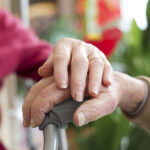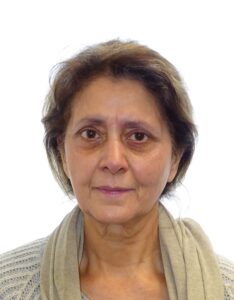Heart Disease: A Deeper Dive
Heart Disease: A Deeper Dive, provides an overview of the types, causes and treatments, with scientific and medical expressions explained in simple terms.
What is heart disease?
There are several different types of heart disease, including:
- Coronary heart disease
- Ischaemic heart disease
- Hypertensive heart disease
- Inflammatory heart disease
- Rheumatic heart disease
- Congenital heart disease
- Cardiac arrhythmias
Coronary heart disease
Is simply any heart disease that is caused by narrowing of the coronary arteries; the arteries that carry blood to the heart. This process of “narrowing” is also called atherosclerosis. Ischaemic heart disease and hypertensive heart disease can both cause restrictions in the coronary arteries, and are types of coronary heart disease.
Ischaemic literally means “loss of blood.”
Hypertensive heart disease
This is the term used to describe heart conditions related to high blood pressure, including:
- Thickening of the heart muscle (left ventricular hypertrophy – LVH) – where constant hard exercise causes the heart muscle to “bulk up”. This changes the way the heart functions, especially as the bulk is usually one-sided, commonly affecting the left ventricle.
- Coronary artery disease (coronary heart disease – CHD) – high blood pressure which causes the arteries to narrow, this is caused by buildup of fat and other substances that are collectively called “plaque”.
- Heart failure – both LVH and CHD can lead to heart failure, which is when the heart is unable to pump enough blood to the rest of the body.
Inflammatory heart disease
Is caused by an infection caused by bacteria, a virus, fungi or parasites. It can also be caused by toxic materials in the environment carried in water, food, air, toxic gasses and pollution.
The heart has three layers:
- Pericardium – the outer fluid-filled sac that surrounds the heart
- Myocardium – the inner muscle at the core
- Endocardium – the innermost lining
The inflammatory conditions are called pericarditis, myocarditis or endocarditis, depending on which part of the heart is affected.
- Pericarditis – is inflammation of the fluid sac that surrounds the heart, often caused by infection metabolic disorders, or adverse reactions to certain medications.
- Myocarditis – is inflammation in the muscle caused by viral infections, some diseases and immune disorders.
- Endocarditis – is inflammation of the inner lining usually occurring after an artificial valve has been inserted, or if there has been a previous injury to the heart.
Rheumatic heart disease
Is caused by rheumatic fever. Rheumatic fever causes inflammation and can affect connective tissue in the heart, joints, brain and skin. This causes damage to the heart valves, which in turn leads to rheumatic heart disease.
Congenital heart disease
It is estimated that in the UK, 9 out of every 1000 babies are born with congenital heart disease. Congenital heart disease is the name given to birth defects that have an effect on the way the heart works. There are three main categories:
- In-heart valve defects – valves within the heart direct blood flow and if they malfunction they may close or leak.
- In-heart wall defects – if the walls between the chambers of the heart are not formed properly, blood may back-up or build up in places where it shouldn’t.
- Blood vessel defects – if the arteries and veins leading to the heart are not functioning properly, blood flow to the heart can be affected.
It can be caused by:
- Down’s syndrome
- The mother having poorly controlled diabetes (type 1 or type 2) while pregnant
- The mother having certain infections while pregnant
- A genetically inherited heart defect
- Taking certain prescription drugs during pregnancy
- Use of alcohol or illegal drugs during pregnancy
Cardiac arrhythmias
Is when the heartbeat is irregular, either too fast or too slow. If diagnosed and treated it is possible to live with an arrhythmia. The main types are:
- Atrial fibrillation – a heartbeat that is irregular and faster than usual
- Supraventricular tachycardia – short bursts of high heart rate while at rest
- Bradycardia – a heartbeat that is abnormally slow
- Heart block – a slow heartbeat that can cause loss of consciousness or collapse
Read more about heart palpitations in What Are Heart Palpitations?.
What causes coronary heart disease?
Coronary heart disease is caused by damage to the coronary arteries. The most common causes of this damage are:
- Smoking, including passive smoking
- High levels of fat and cholesterol in the blood
- High blood pressure
- High levels of sugar in the blood as a result of insulin resistance or diabetes
- Inflammation of the blood vessels
Where the damage occurs, plaque can start to collect. This plaque is made up of fat and cholesterol, which lines the arteries leading to the heart, causing them to narrow.
Over the course of time, this plaque can harden or break open. Where the plaque has broken, blood platelets collect to heal the damage. This can lead to clotting.
Clotting can narrow the artery even more, if not block it completely. If a complete blockage occurs, then a heart attack will follow.
If you are caring for someone who has heart disease, the Hometouch team can help. We can provide you with advice and support, and help you to find a top quality carer in your local area.
Just call 020 7148 0746.
What is cholesterol?
Cholesterol is a necessary substance found in all cells of the body. It contributes to the production of hormones, vitamin D and digestive substances. The body creates all of the cholesterol it needs for these processes, so it’s not necessary to eat cholesterol-rich foods to boost levels of cholesterol in your cells. Despite this, some food groups contain cholesterol and cause cholesterol levels to reach unsustainable levels.
Cholesterol is carried through the bloodstream in clusters called lipoproteins, which have a fatty center and a protein surface. There are two types of lipoprotein:
- Low-density lipoproteins (LDL)
- High-density lipoproteins (HDL)
As high levels of LDL cholesterol leads to buildup in the arteries leading to the heart, and HDL cholesterol carries cholesterol from various parts of the body to be processed by the liver, LDL is sometimes referred to as “bad cholesterol” and HDL as “good cholesterol”.
Foods that are high in cholesterol include:
- Liver
- Margerine
- Cakes and biscuits
- Shellfish
- Processed meats such a burgers and sausages
- Full fat cheese and dairy products
- Full fat coconut milk and palm oil
A brief history of heart disease
- Over 3,500 years ago, some high ranking Egyptians and Pharaohs suffered from heart disease, especially narrowing of the arteries (atherosclerosis). This could be due to the fatty meats consumed by wealthy Egyptians, combined with the salt used to preserve food.
- 1452 – 1657 – Leonardo da Vinci and William Harvey make key discoveries about how the heart works.
- Friedrich Hoffmann (1660-1742) observed coronary heart disease originating in the “reduced passage of blood” within the arteries.
- 1768 – Angina was first described.
- 1912 – James B. Herrick connected the narrowing of the arteries to angina, and coined the term “heart attack”.
- Early 1900s – Egas Moniz and Werner Forssman pioneered the exploration of the coronary arteries with catheters. This has now become the ‘coronary angiogram’, which can be used to confirm coronary artery disease.
- Mason Sones (1918 – 1985) perfected a technique for producing high-quality images of the coronary arteries.
- 1948 – Researchers under the National Heart Institute began the Framingham Heart Study.
- 1949 – “Arteriosclerosis”, now known as atherosclerosis, was classified as a disease.
- 1950 – John Gofman and his team identified the two types of cholesterol, and that men who developed atherosclerosis had higher levels of LDL and lower levels of HDL.
– In the same year, Ancel Keys observed that some Mediterranean and Japanese populations, whose diets were low in fat, had lower rates of heart disease. This lead to a link between heart disease and diet. - 1960s and 70s – Heart bypass surgery and angioplasty were first used to help treat heart disease.
- 1980s – The use of stents, used to prop-open narrowed arteries, became more common.
The signs and symptoms of heart disease
Coronary heart disease
Symptoms include:
- Chest pain – also known as angina, the pain can be mild and feel similar to indigestion, or it can be severe and cause a feeling of heaviness or tightness in the centre of the chest, which can spread to the arms, neck, jaw and back.
- Heart palpitations
- Breathlessness
- Heart attack
Inflammatory heart disease
Symptoms include:
- Chest pain, angina
- Pain in the heart muscle
- Shortness of breath
- Edema – swelling in various body parts, most often the feet, ankles, legs and/or hands
- Unusual fatigue
- In some cases, myocarditis can cause a rash, sore throat and itchy eyes
Heart arrhythmia
Symptoms include:
- Palpitations, which feels like the heart is skipping a beat, fluttering, or beating too hard and/or too fast.
- An unusually slow heartbeat
- An irregular heartbeat
- Feeling pauses between heartbeats
It’s important to be aware of these things and seek medical advice as soon as possible. More serious symptoms include:
- Anxiety
- A feeling of dizziness and light-headedness
- Unusual sweating
- Shortness of breath
- Pain in the chest
Congenital heart disease
As it’s a birth defect, it’s especially important to be aware of the symptoms of congenital heart disease. The term refers to several different types of heart defect, which means that there are a range of symptoms to look out for, including:
- Low birthweight – babies born at full term weighing less than 5 pounds 8 ounces, and premature at less than 3 pounds 5 ounces.
- Delayed growth
- Extreme tiredness and fatigue
- Poor feeding
- Rapid breathing
- Shortness of breath
- Rapid heartbeat
- Excessive sweating
- Chest pain
- A blue-ish tint to the skin – blue skin means that the blood isn’t carrying enough oxygen. This can happen if there’s a breathing problem or if the heart is struggling to pump enough blood through the lungs.
- Clubbed fingernails – which means that the nails and tips of the fingers are strangely curved. Nails will closely follow and wrap around the shape of the fingertip.
Hypertensive heart disease
Symptoms vary depending on how bad the disease is, and how it’s progressing. Symptoms can be very slight, or very obvious. Things to look out for are:
- Chest pain
- Shortness of breath
- Tiredness
- A feeling of tightness or pressure in the chest
- Pain in the neck, back, arms or shoulders
- A persistent cough
- Loss of appetite
- Swelling in the ankles
If you ever feel your heart suddenly start to race or beat irregularly, seek emergency care immediately.
Rheumatic heart disease
Rheumatic heart disease can occur as a result of rheumatic fever. The effects can be short-term (acute) or long-term (chronic). Symptoms include:
- A recent diagnosis of rheumatic fever or strep throat infection
- Dizziness
- Faintness
- Shortness of breath
- Irregular pulse
How to recognise a heart attack and how to react
When the blood supply to the heart is blocked a heart attack will follow. It’s perfectly possible to make a full recovery from a heart attack, but the risks are high. If the heart stops beating, commonly known as a cardiac arrest, then it’s very possible that the person will die.
For this reason, swift action is necessary.
To confirm a heart attack, look for the 4 Ps:
- Pain – a constant pain in the chest, which may spread to the neck, arms and/or jaw.
- Pale skin – which signifies a lack of blood circulation
- Pulse – a rapid and weak pulse
- Perspiration – sweating
If you suspect a heart attack it’s important to call 999 immediately and clearly tell them that you think someone is having a heart attack.
After you have called the emergency services you can help the person into a more comfortable position, ideally leaning against a wall with their knees bent and shoulders supported. This position:
- Helps to ease pressure on the heart
- Will protect them from harm should they collapse
If you have it and if they’re not allergic, give them 300mg of aspirin and tell them to chew on it slowly.
The common belief is that aspirin “thins the blood”, which isn’t really the case. Instead aspirin is an antiplatelet medication. Platelets are carried in the bloodstream and help clots to form. When a person is having a heart attack it’s important to prevent more clots from forming, and aspirin will do this.
After the trauma of the initial attack they may go into “shock”. Shock is in itself a life-threatening condition which can result from any serious injury. It is quite possible to have a perfectly treatable injury but die from the resulting shock, so it’s well worth taking seriously.
Keep checking their pulse, breathing and responsiveness. The best way to monitor a person’s consciousness, and to help them stay conscious, is to keep them talking. Calmly keep asking them questions and let them ramble. As long as they’re talking, they’re conscious!
If they become unresponsive you will need to tilt their head back slightly to open their airway, and keep checking their breathing. If they stop breathing you may need to consider doing CPR.
To find out more about how to treat a person who has had a heart attack, visit the St John Ambulance website.
The diagnosis
Coronary heart disease and hypertensive heart disease
The first stage of diagnosis will involve taking a full family history, taking a blood pressure reading and carrying out a blood test to measure cholesterol levels. It’s likely that questions will be asked to determine the lifestyle of the patient; how much exercise they get, how often, and whether or not they smoke etc.
There are more tests that may confirm a suspected diagnosis. Not everyone will be referred for more tests, and it’s unlikely that a person will go through them all. The tests include:
- An electrocardiogram (ECG) – a simple test that records the rhythm and electrical activity of the heart. Small sticky patches called ‘electrodes’ are attached to the chest, arms and legs, and connected by wires to the recording machine. The whole thing takes about 5 minutes.
- An exercise stress test – designed to help doctors to know how well the heart handles being made to work, the patient is hooked-up to equipment that will monitor and record their heart activity. They are then asked to use a treadmill at gradually increasing speeds from a slow walk onwards depending on how the heart is responding.
- X-rays
- Echocardiogram – a type of ultrasound used to create an image of the heart and the surrounding blood vessels and arteries. Small sticky electrodes are placed on the skin and a lubricating gel is applied, then a probe is passed across the chest to build-up a complete and detailed image.
- Blood tests
- A coronary angiography – uses iodine dye and x-ray images to highlight any blockages in the coronary arteries.
- Radionuclide tests – involves injecting a substance into a vein. The substance is then absorbed by the heart muscle and a clear image can be obtained.
- Magnetic resonance imaging (MRI) scans
- Computerised tomography (CT) scans – sometimes called a CAT scan, the patient lays on their back and is passed through a donut shaped 360 degree x-ray scanner.
Inflammatory heart disease
Has much the same process of diagnosis as coronary heart disease, but blood cultures may also be taken to assess the presence of virus or bacteria.
Congenital heart disease
Congenital heart disease can be diagnosed during pregnancy. Routine ultrasound scans may reveal an initial suspicion, at which point a foetal echocardiography will be scheduled at 18-22 weeks.
An echocardiography is a type of ultrasound where high frequency sound waves are passed through the body to build-up an image of the fetus’s developing heart.
This may also be advised if there’s a family history of heart disease, or another factor that may increase the risk of a heart defect in the child.
Despite the availability of these tests, congenital heart disease may not be identified until after birth. An infant’s heart is checked at every routine check-up, but sometimes the presence of a heart defect goes without diagnosis for years. For this reason it’s always worth keeping an eye out for the symptoms.
Treatments
Heart disease can often be successfully treated with a combination of lifestyle changes, medications and, in some cases, surgical procedures.
Lifestyle changes
- Quitting smoking
- Adopting a healthy diet
- Taking regular exercise
Medication
A lot of medications for CHD aim to reduce blood pressure or widen arteries. As with all medications there are risks of side effects, but at no point should medication be stopped without first consulting a doctor.
Antiplatelets
Reduce the risk of clots from forming.
- Low-dose aspirin
- Clopidogrel – common side effects include bruising, nosebleeds, diarrhoea, abdominal pain
- Ticagrelor – common side effects include difficult or laboured breathing and tightness in the chest
- Prasugrel – common side effects include headache and back pain
Statins
Help to lower cholesterol levels.
- Atorvastatin – common side effects include headache, lower back pain, difficulty urinating, runny nose
- Simvastatin – common side effects include dizziness, fainting, faster than usual heartbeat
- Rosuvastatin – common side effects include dark urine, unusual fatigue, headache, nausea
- Pravastatin – common side effects include muscle and bone pain, muscle stiffness, pain in the joints
Beta-blockers
Often used to treat high blood pressure, beta-blockers include:
- Atenolol – common side effects include dizziness, tiredness and depression
- Bisoprolol – common side effects include headache, fatigue, sleep problems and joint pain
- Metoprolol – common side effects include blurred vision, chest pain, confusion, dizziness and perspiration
- Nebivolol – common side effects include headache, fatigue, nausea and sleeping problems
Nitrates
Nitrates act to widen the blood vessels by relaxing them, allowing them to open up and let more blood pass through. They’re available in tablets, sprays and skin patches and can cause mild side effects such as headaches, dizziness and flushed skin.
ACE (angiotensin-converting enzyme) inhibitors
ACE inhibitors block the activity of a hormone called angiotensin II, which causes blood vessels to narrow. Normally this keeps blood pressure regulated by controlling flow, but when blood pressure is high, it stops being useful. Examples include:
- Ramipril
- Lisinopril
Common side effects include a dry cough and dizziness. If the patient gets a dry cough they may be prescribed Angiotensin II Receptor Antagonists, which work in the same way as ACE inhibitors but usually only cause mild dizziness.
Calcium channel blockers
The heart is made of specialised muscle cells called cardiomyocytes, and like other muscles the cardiac muscles need calcium to contract and release. It’s this repeated contraction and release that causes the heart to beat. Calcium flows into the muscle cells through tiny channels and allows each muscle fibre in the heart to slide past each other to shorten and contract. At the end of the contraction, calcium flows out of the channels again, allowing the muscles to relax and lengthen.
Calcium channel blockers, or CCBs, reduce the amount of calcium entering the muscle cells of the heart and the blood vessel walls. This allows the blood vessels to relax, which leads to the heart receiving more oxygenated blood. This means that CCBs have the dual effect of lowering blood pressure and reducing heart rate.
Surgical procedures
Coronary angioplasty
Angioplasty can be planned in advance, or carried out in an emergency. During the procedure a small balloon is inserted into the artery to push the fatty plaque back against the sides. Afterwards a wire “stent”, in effect a wire mesh tube, is usually inserted to hold it open.
Coronary artery bypass graft
Also known as a heart bypass or bypass surgery, the procedure involves grafting an artery that can carry blood around the blocked area. Sometimes an already existing artery is taken and diverted for the task. The procedure is carried out while the heart continues to pump blood, with no need for a heart and lung machine.
Heart transplant
Sometimes, when all repair options have failed, the only option left is to replace the part. Risks are high and the procedure is highly dependent on a suitable donor heart being found.
Hypertensive heart disease
The treatments offered for hypertensive heart disease depend on the seriousness of the illness, the age of the patient, and the patient’s medical history.
Medications
The medications used for hypertensive heart disease are similar to those used for coronary heart disease, and include:
- Nitrates
- Statins
- Calcium channel blockers
- ACE inhibitors
- Aspirin
Surgeries
It may be that the blood flow to the heart needs to be increased and regulated. If this is the case then a pacemaker may be implanted. A pacemaker is a battery-operated device about the size of a matchbox and weighing between 20-50g. The battery and computer circuit are attached to the heart with one or more wires known as pacing leads. It produces electrical stimulations, which cause the cardiac muscle to contract.
Almost all modern pacemakers will work on demand, meaning that they can detect when the heart rate has dropped and needs stimulation, but can also detect when the heart is working normally and doesn’t need any interference.
Cardioverter-defibrillators (ICDs) can be implanted to send an electrical shock to the heart, to reboot it in the event that it stops. ICDs are most often used as a preventative measure if a person is thought to be at serious risk of cardiac arrest. It is possible for a pacemaker and ICD to be combined in one device.
Inflammatory heart disease
Can be treated with the following, depending on the type: pericarditis, myocarditis or endocarditis.
- Diuretics – to remove excess fluid and reduce swelling
- Anti-inflammatory medications, including ibuprofen and corticosteroids
- Antibiotics to treat any presence of bacterial infection
- Nutritional supplements
- Bed rest
How does heart disease affect life?
Coming to terms with a heart condition can be tough, but it is possible to live normally with a heart condition for many years after initial diagnosis. Ongoing difficulty can be faced when getting used to new medications, and any surgical procedures can have long recovery periods involving physiotherapy.
The most important thing about living with heart disease is to keep up a healthy diet and lifestyle. Almost anything is possible, and it’s important to focus on the things that can be done, rather than worry about the things that can’t. For more information about getting back on track with heart disease, visit the British Heart Foundation website.
It can be difficult to find the motivation to keep up with a healthy lifestyle if you’re on your own. Isolation and loneliness can lead to depression, which can lead to poor medication adherence and disinclination to follow advised plans for diet and exercise. If you or a loved one is facing a diagnosis of heart disease alone, Hometouch can help.
Our carers are on hand to provide a friendly face and a helping hand right through to more advanced care. They’re available for a few hours a day to full time live in care. Whatever the requirements, we can help you to find the care and companionship you or your loved one needs to help them to live safely and happily in their own home.
If you’re unsure about the prospect of care, that’s ok. You can download our impartial guide to elderly care (which is applicable no matter the age of your loved one) and get to know the many options available. There’s no harm in knowing more, and a carer might be able to provide you and your loved one with the support you need.
Find out more:
- What are heart palpitations?
- How heart disease affects your life
- Heart attack in women
- How heart disease affects the respiratory system
- Heart disease warning signs
- Live in care vs Care home
- How much does live in care cost?
- Is live in care right for me?
Sources:
- NHS.co.uk. Available at: https://www.nhs.uk. Last accessed 30/11/2017.
- Science Daily. Ischaemic heart disease. Available at: https://www.sciencedaily.com/terms/ischaemic_heart_disease.htm. Last accessed 30/11/2017.
- HealthLine. Available at: https://www.healthline.com. Last accessed 30/11/2017.
- Med Care Tips. What is inflammatory heart disease? Available at: https://medcaretips.com/what-is-inflammatory-heart-disease/. Last accessed 30/11/2017.
- MedicineNet. Edema. Available at: https://www.medicinenet.com/edema/article.htm#what_is_edema. Last accessed 30/11/2017.
- Lu L et al. The inflammatory heart diseases: causes, symptoms and treatments. Cell Biochem Biophys. 2015;72(3): 851-855. https://link.springer.com/article/10.1007/s12013-015-0550-7
- National Heart, Lung, and Blood Institute. What are the signs and symptoms of arrhythmia? Available at: https://www.nhlbi.nih.gov/health/health-topics/topics/arr/signs. Last accessed 30/11/2017.





